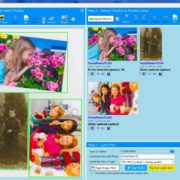Just bought the new PC and wondering how to transfer lengthy videos, images or large documents but don’t know the right tools?
File transfer takes a lot of time, but using the right methods you can complete the task quickly.
Using the below methods you can easily transfer data using both software and hardware but please make sure you secure your data before transferring.
Top 7 File Transfer ways to share data (All user friendly)
#1 Cloud Storage File Transferring
The most common way is to use cloud storage services, but only if your required files are undamaged, or you are ready to fix their formats. Why choose clouds? Nowadays, cloud storage has already simplified file transfer between PCs by eliminating the need for intermediary discs, wires, or other designated tools. You may use OneDrive or DropBox because they are free upon creating the account. If you seek a few more gigabytes for a bigger capacity of your files, there is a premium subscription.
For instance, Google Drive comes with 15GB of storage which can be enlarged. OneDrive (with a Microsoft Office 365 subscription) offers 1TB of storage, among others.
How to do the transfer? Open your Google Drive/OneDrive account and drag the files from your computer into the newly-created folder. It may take some time if you have lots of files. Yet, after it is done, you can take your new PC and retrieve all the files from your cloud account.
#2 USB File Transferring
The next option is to use the USB flash drive if you have one. Here, you should first evaluate the volume of your required files for transferring. Then, you should purchase the USB of the right capacity. You simply copy files to a USB and insert that USB into a new computer to allocate the data.
If you need to copy a large number of files, an external hard drive can be used instead. External hard drives are available in 1TB or higher capacities. They are plugged into your PC’s USB port, and you can simply copy data with a hard drive in the same way you did with a USB flash drive.
#3 Nearby Sharing
Nearby Sharing is a product of Microsoft designed in pursuit of making it even simpler to transfer data over a set network. You need to have two Windows computers to enable the feature. To activate Nearby Sharing on your computer, just follow the instructions below.
- Navigate to your PC Settings, then System;
- Select Shared tab;
- Scroll down until you locate Nearby sharing, then enable it.
- Set the drop-down to Everyone nearby in the drop-down below it;
- After that, launch File Explorer, right-click the file you wish to share, and select Sharing, then follow the steps.
Here, it is also necessary to address the possible issue of unreadable formats of your files. Your new PC might no longer support them. Still, you can change video format online in a few clicks only. To effortlessly change the format of your video with Movavi Video Converter, you will need to add the necessary file to the program, pick a new format, compress the video if required, edit, and start the conversion. After that, you can try to transfer a newly-converted file via Nearby Sharing once again but with the supported format.
#4 Connecting HDD or SSD
This is useful when moving files from an old computer to a new one. SATA cables are used to connect Hard Disk Drives and Solid State Drives to the motherboard. Connect your old hard drive to a SATA or eSATA (external SATA) connector on your computer. It will be recognized by the operating system as a new drive. Then begin transferring to the hard disk of your new computer. If your computer lacks an extra SATA port, you can connect your HDD or SSD manually using a SATA/USB adapter.
#5 Use the Designated File Transfer Software
You may also turn to one or another file transfer utility to allocate your crucial data on a new PC, including videos, audios, documents, etc. Again, you may need to refer to video or audio converters of formats for your new PC programs (choose the audio file, find the new preferred format, edit the file, and start the conversion). The whole process of audio conversion is as easy as ABC.
So, with the help of file transfer software, you have to download and install the preferred one on both computers. For instance, refer to Send Anywhere and SHAREit. On both computers, install and run the program. You must connect both computers via a hotspot; otherwise, you will be prompted to scan a QR code or enter a password. Once the computers are linked, follow the instructions and choose the option to send files from your source computer. Selecting the option to receive the file on the receiving computer will result in the transmission of your data.
#6 Use the Transfer Cable
File copying can also be done with the help of the transfer cable. While it may appear to be a relic, such a method is still a reliable technique to transfer information between two computers if the two are allocated close. The Plugable Transfer Cable is a dependable and affordable alternative that works with practically every version of Windows, including even Windows XP.
How to do it? Connect the cable to both computers via USB ports and use the accompanying transfer software to pick files and folders to transfer from one computer to the other.
#7 Share Over Wi-Fi or LAN
There are two more major methods for sharing files and folders across computers that are near to each other. The first step is to set up a local area network (LAN) so that one computer may access the hard disks of the other. The second method is to transmit data over Wi-Fi using the software. All of the main operating systems have a built-in option for configuring a home network. This allows devices connected to the same router (through Ethernet or Wi-Fi) to recognize one other indefinitely. So, when you need to transfer data across computers, you don’t have to establish a new connection each time. It is always active as long as both machines are turned on.
Final Conclusion
All the above-mentioned methods are quick and easy to work with, and you may have your files transferred almost immediately. Yet, do pay attention to your file formats that, on some occasions, need to be changed for new PCs.
You can use the software to fix corrupted video files if any of your files get corrupted during file transfer.
Do we missed out any important file sharing method? Please let us know in comments.




